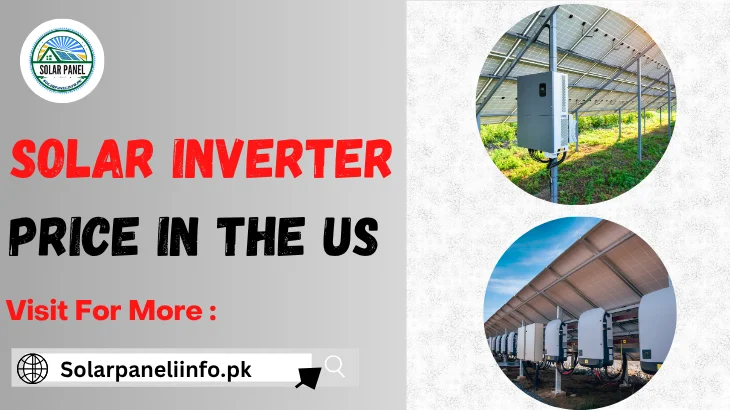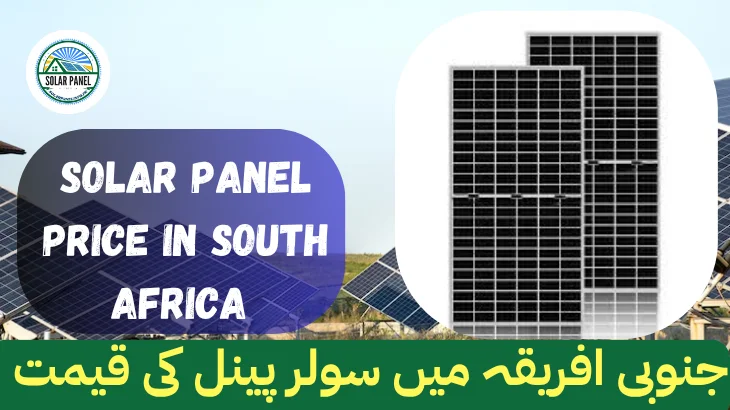Solar Inverter Price in the US
The article discusses the competition for samsi tawna and underscores the importance of adhering to samsi photographic (PV) norms. It explains a solar panel that functions with an inverter that converts direct current (DC) into alternating current (AC) for indoor use. While samsi tawna is commonly viewed at the edge of a samsi tawna, factors like size, value, and efficiency of the anorer are also significant. Additionally, it highlights the need to understand repeat offending issues in America and develop strategies to address this by 2025. The price of solar inverters in the US ranges from $1,000 to $3,000, varying by type, capacity, and brand.
Compare the rate With: Top 10 Solar Inverter Prices in India

یہ مضمون سمسی ٹونا کے لیے بڑھتے ہوئے مقابلے پر بحث کرتا ہے اور سمسی فوٹو گرافی (PV) کے اصولوں پر غور کرنے کی اہمیت پر بحث کرتا ہے۔ یہ مضمون اس بات پر زور دیتا ہے کہ سمسی ٹونا ایک انورٹر پر کام کرتا ہے، جو سمسی ٹونا کے ذریعہ تیار کردہ ڈائریکٹ کرنٹ (DC) کو اندرونی استعمال کے لیے الٹرنیٹنگ کرنٹ (AC) میں تبدیل کرتا ہے۔ اگرچہ سمسی ٹونا اکثر سمسی ٹونا کے کنارے پر دیکھا جاتا ہے، لیکن انورر کا سائز، قدر اور کارکردگی بھی اتنی ہی اہم ہے۔ نئے رجحانات کا جائزہ لینے اور دوبارہ مجرموں کے بارے میں باخبر فیصلے کرنے کے لیے، یہ ضروری ہے کہ امریکہ میں بار بار کی جارحیت کے مسائل کو سمجھنا اور 2025 تک دوبارہ جرم کے دوبارہ سر اٹھانے کا انتظام کرنے کی حکمت عملیوں کو سمجھنا ضروری ہے۔
Average Solar Inverter Cost in the US (2025)
The cost of inverters can differ depending on the size of the system, the type of technology used, and various features. Here’s a summary:
- Standard Price Range: $1,000 – $3,000 (for residential systems)
- National Average: Approximately $2,000 for home installation
- Cost per Watt: $0.15 – $0.27 for each watt
- Percentage of Total System Expense: Inverters account for 6% to 15% of the overall cost of your solar installation.
| Inverter Type | Price Range (USD) | Price per Watt | Typical System Size | Best Use Case |
| String Inverter | $800 – $2,500 | $0.15 – $0.25 | 3 – 10 kW | Basic residential systems with minimal shading |
| Microinverter | $150 – $350 per panel | $0.25 – $0.35 | 4 – 8 kW (15–25 panels) | Shaded roofs, multiple panel orientations |
| Hybrid Inverter | $1,000 – $5,000+ | $0.20 – $0.30 | 5 – 12 kW | Battery-ready or off-grid capable systems |
| Inverter Replacement | $350 – $3,500 | — | Varies | Replacing faulty or outdated inverters |
| Labor & Installation | $200 – $500 (extra) | — | — | Installation or replacement service fees |
Types of Solar Inverters & Their Prices
In the United States, there are three primary types of solar inverters utilized in residential solar energy systems:
String Inverters (Centralized)
-
Cost: Ranges from $800 to $2,500.
- Ideal For: Homes with no shading and south-facing roofs.
- Advantages: Cost-effective and reliable for most applications.
- Disadvantages: The performance of the entire array can be compromised if one panel experiences underperformance.
Microinverters (Module-Level)
- Cost: Approximately $150 to $350 per panel, totaling $2,250 to $8,750 for systems with 15 to 25 panels.
- Ideal For: Roofs that experience shading or have panels oriented in different directions.
- Advantages: Offers high efficiency and allows for individual monitoring of each panel.
- Disadvantages: Generally presents a higher upfront investment compared to string inverters.
Hybrid or Battery-Based Inverters
- Cost: Typically ranges from $1,000 to over $5,000.
- Ideal For: Solar systems that incorporate battery storage solutions, such as the Tesla Powerwall or Enphase IQ Battery.
- Advantages: Supports smart grid technology and provides greater energy independence for homeowners.
- Disadvantages: Installation tends to be more complex.
Each type of inverter has specific benefits and drawbacks, making it important for homeowners to assess their unique needs and circumstances when choosing a system.
Factors That Affect Solar Inverter Pricing
System Size (kW)
The capacity of the inverter required directly correlates with the size of the solar energy system. Larger systems necessitate higher-capacity inverters, which typically come at a premium price. For instance:
- A 3 kW inverter may cost around $1,000.
- A 10–12 kW inverter can range between $2,500 and $3,500.
Read more: 10kW Solar System Price in Pakistan
Brand & Efficiency
The brand of the inverter can significantly impact reliability and efficiency. Premium brands tend to offer greater efficiency rates—often exceeding 97%—and come with longer warranties. The classification of brands is as follows:
- High-end brands: SolarEdge, Fronius, Enphase (typically more expensive).
- Mid-range options: SMA, Growatt, Sungrow.
- Budget-friendly: Solis, GoodWe.
Installation & Labor
When budgeting for an inverter, it is essential to account for installation costs, which generally add between $200 and $500 for replacement or initial setup. More complex setups, such as hybrid systems, may incur higher installation costs.
Know About: Solar Panel Installation Plan
Smart Features
Inverters equipped with advanced features such as smart monitoring applications, rapid shutdown safety mechanisms, and battery readiness tend to increase the overall cost.
Warranty Length
The length of the warranty can also influence the price. Inverters with longer warranties, ranging from 10 to 25 years, often come with a higher upfront cost. However, this investment can lead to better long-term value and peace of mind.
Top Solar Inverter Brands in the US (2025)
Here are the most reliable and widely used inverter brands:
| Brand | Type | Price Range | Warranty |
| Enphase | Microinverter | High | 25 years |
| SolarEdge | String + Optimizer | High | 12–25 years |
| Fronius | String | Medium–High | 10–20 years |
| SMA | String | Medium | 10–15 years |
| Growatt | Hybrid | Medium | 10 years |
| Tesla | String | Medium–High | 12 years |
Solar Inverter Replacement Costs
- Replacement Costs: $350 – $3,500 (depending on the type)
- Labor Fees: $200 – $500
- Duration: Inverters generally require replacement every 10–15 years (while microinverters last 20–25 years)
2025 Market Trends
- Rise in hybrid systems: There is a growing demand for battery-ready and grid-independent solutions.
- Surge in microinverters: Their increased adoption is attributed to enhanced efficiency and resistance to shading.
- Intelligent solar residences: AI-based energy management technologies are enhancing the power and versatility of inverters.
- Decreasing prices: As production scales up and competition increases, the costs of inverters are projected to experience a slight decline.
Buyer Tips: Choosing the Right Inverter
- Evaluate Roof Conditions: Microinverters are advantageous for shaded or intricate roofs.
- Prepare for the Future: Opt for hybrid systems if you intend to incorporate a battery later.
- Verify Compatibility: Ensure that the inverter’s size and voltage align with the panel’s output.
- Warranty is Important: Select inverters that come with more than 10 years of warranty coverage.
- Obtain Multiple Quotes: Compare prices from different installers and the brands they provide.
Conclusion
While the challenge of changing the price of solar power is rapidly increasing in America, the buyers of new systems or the people interested in adopting the existing system should understand the importance and the failure of solar power. It may be said that solar power is not seen as solar money, but the efficiency of the system and the cost of travel are equally important for saving money. Depending on the oath of the answer, the system, and any other support feature, prices can vary considerably, generally ranging from $800 to over $5,000. To obtain the correct answer, prices, workmanship, washing, and other considerations, such as battery storage, should be taken into account. Since solar tax credits last until 2025, now is the right time to buy a top-notch, custom-built answering machine.
FAQ’s
What is the average cost of a solar inverter in the US in 2025?
The average cost of a residential property is around $2,000, while a rental property ranges from $1,000 to $3,000.
Which type of solar inverter is best for homes with shade?
Microinverters are ideal for roofs with shading or multiple directions, as they enable optimization for each panel and enhance overall performance.
How often do solar inverters need to be replaced?
Standard string inverters usually last between 10 and 15 years, while microinverters and some hybrid inverters can last for 20 to 25 years with proper maintenance.


